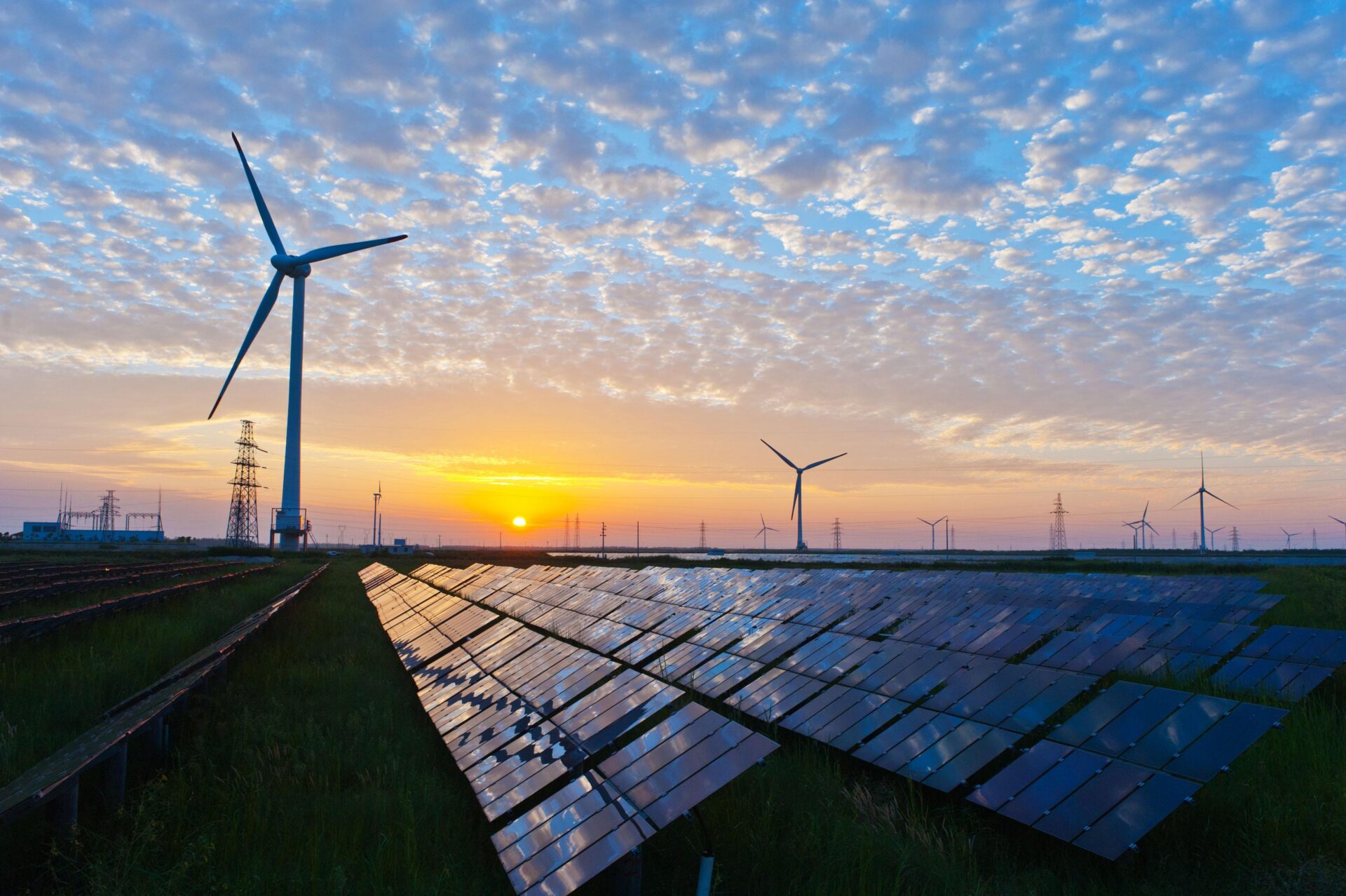Thursday morning, Oct. 24, the Netherlands Environmental Assessment Agency (PBL) will present the 2024 Climate and Energy Outlook (KEV). The KEV provides a detailed overview of historical greenhouse gas emissions and a forecast of emissions for 2030. The KEV was created to determine whether climate goals are within reach, and whether additional policies are needed. In this interpretation, Publieke Zaken outlines the KEV's role in the political process.
In brief:
The 2024 KEV probably paints a bleak picture on meeting emission reduction targets. The October 10 letter on making Dutch industry more sustainable already showed that industry is unlikely to meet its sectoral targets.
Climate and Green Growth Minister Hermans stated at the hearing before she took office that she will only introduce new policies if research shows there is a need for them. Hermans will no doubt have to introduce additional policies if she wants to keep the targets in sight, but that will not be easy. The current coalition parties view climate policy critically, the Netherlands' competitive position is already under pressure, the timeline to 2030 is short and there are limited financial resources. Nevertheless, the emission reduction targets are not entirely without obligation.
It is likely that the House will want to discuss the outcome of the KEV with the minister as soon as possible. In this debate, the Green opposition in particular will urge Hermans to take additional measures as soon as possible. Hermans may then try to go the same political route as Minister Jetten did two years ago: have a steering committee investigate additional measures, and insert them into policy in the spring decision-making process. It may also be that she will announce partly on the basis of policy papers promised up to the Spring Memorandum (such as the MIEK and the IBO net tariffs) to shape a policy package herself in the 2025 Spring Memorandum. In all cases, however, it will be harder for Hermans than for Jetten to get additional climate measures through the House of Representatives, even given her own coalition partners.
Review of the 2022 and 2023 KEV: Reality meets climate target in
In January 2022, the Rutte IV administration raised the climate target from 49% to 55% CO2 reduction by 2030. This seemed an ambitious step at the time, and it soon became clear that the goal would not be achievable without additional policies. The 2022 KEV projected a range of 39% to 50% CO2 reduction, well below the target raised earlier that year.
It was up to Minister Rob Jetten to close this gap. In April 2023, he presented the "Spring Climate Decision" with a package of measures that should deliver 22 Megatonnes of CO2 reduction. The 2023 KEV was optimistic and predicted that if everything went according to plan (including the weather and electricity imports), the target was within reach, with a range of 46% to 57%. To reach this goal, however, all the measures in the spring package had to be translated into concrete policies as soon as possible.
Postponements, cancellations and setbacks
Despite the positive predictions, many of the measures proposed by Jetten have not moved forward over the past year and a half. Crucial parts of the package, such as carbon-free gas power plants, Demand Side Response, BECCS (bioenergy with CO2 capture and storage) and circular plastic chains have actually made virtually no progress. Moreover, due to political uncertainty and lack of implementation power, the potential reduction effect of the package of measures has shrunk to at most 5-10 Megatonnes, far below the targeted 22 Megatonnes.
After the fall of the government before the summer of 2023, the Netherlands was left with a caretaker government, which delayed further policy development. Finally, the new Schoof administration has already completely scrapped a number of climate measures, such as the mandatory (hybrid) heat pump and the increase of the CO2 tax for industry. For reducing emissions in the agricultural sector (and achieving the goal from the Methane Strategy), the scrapped National Rural Area Program (NPLG) and associated Transition Fund were seen as the most important instruments, and an alternative from the cabinet is still pending. Things are not going well on other dossiers either. The electricity grid throughout the Netherlands is locked up, hydrogen seems to need a longer warm-up period, sales of electric cars are disappointing and the development of heat networks has come to a complete standstill.
Our forecast for the 2024 KEV: The clock to 2030 is ticking
The 2024 KEV is expected to paint a bleaker picture. Many measures from the Jetten climate package will no longer be (fully) included for 2030. PBL has already communicated that the (deleted) measures from the Headline Agreement have been included, but that the Coalition Program came too late to be fully calculated.
This could put the upper end of the range for CO2 reduction in 2030 around 50%, below the 55% target. Then we are actually back to the situation of 2022. However, with the difference that we now only have roughly 5 years left until 2030. Thus, it is slowly becoming unfeasible to move closer to the 2030 goal with new policies. Introducing new policies takes a long time, legislation quickly needs two years to be approved, and large technical projects take 5 to 7 years to get from an initial plan to an operational project. Moreover, infrastructure in particular is behind schedule.
Moderate political support for climate policy
The new administration seems reluctant to take rigorous steps. Most coalition partners have not shown themselves to be ardent advocates of ambitious climate policies in recent years. Certainly PVV and BBB have serious question marks about the feasibility and costs for citizens. The VVD seems to be the only party currently really enthusiastic about climate policy. However, the outline agreement does state that this coalition intends to stick to existing agreements and take action as soon as targets are not met. National headlines on top of European policy are out of the question, according to the coalition, which limits the possibilities for additional measures.
The question therefore remains whether the new cabinet will actively pursue policies to still meet the 2030 targets. Minister Hermans has confirmed her intention to stick to the emission reduction targets, while keeping an eye on affordability and energy independence. On her path she will encounter not only her less enthusiastic coalition partners, but also her VVD colleague and Finance Minister Eelco Heijnen. There seems little financial room to take costly additional measures.But there are also opportunities: the budget discussion for the Ministry of KKG has yet to take place (week of Nov. 4). However, shifting within the budget will not be enough. With that, the spring decision is the most logical time to announce additional measures.
The legal consequences can be significant
The Rutte IV administration has set the 55% goal in the Climate Act as a "target." This target is not intended to be legally binding. In addition, there is no European emission reduction target for the Netherlands as a whole. The ETS sectors (industry and electricity) are covered by the European ETS target (-63% for the entire EU). For the ESA sectors (including the built environment, agriculture and transport), the Netherlands did receive European obligations, which the Netherlands will therefore have to comply with.
Moreover, the Urgenda ruling shows that the Netherlands is bound by the European Convention on Human Rights to reduce emissions by a certain amount. At the time, based on IPCC estimates, that was at least 25% by 2020. Failure to meet the emission reduction targets, and not taking additional measures when you see it coming, could therefore once again lead to lawsuits forcing the Netherlands to take more rigorous measures than this administration itself could or would take.So emission reduction targets are not negligible in determining policy.
Conclusion: Stick to Dutch goals or join the European playing field?
With the publication of the KEV 2024, it will become clear that the ambition of 55% reduction in 2030 is becoming increasingly unachievable. While the Netherlands struggles with the feasibility of this self-imposed goal, the European Green Deal and new Clean Industrial Deal will become increasingly important as benchmarks for climate action in our country. The question remains whether the Netherlands is able to take the necessary steps in the current political context, or whether the playing field is shifting to the European arena.


